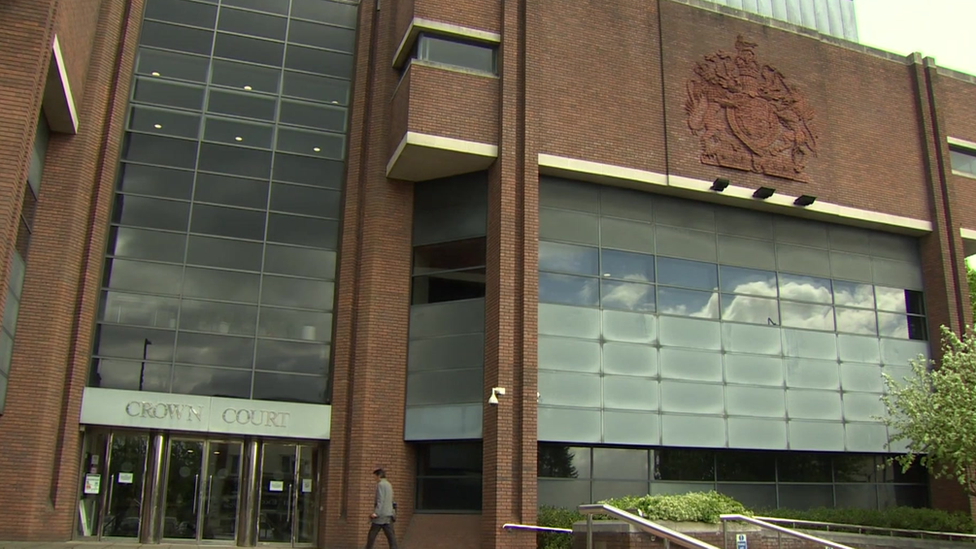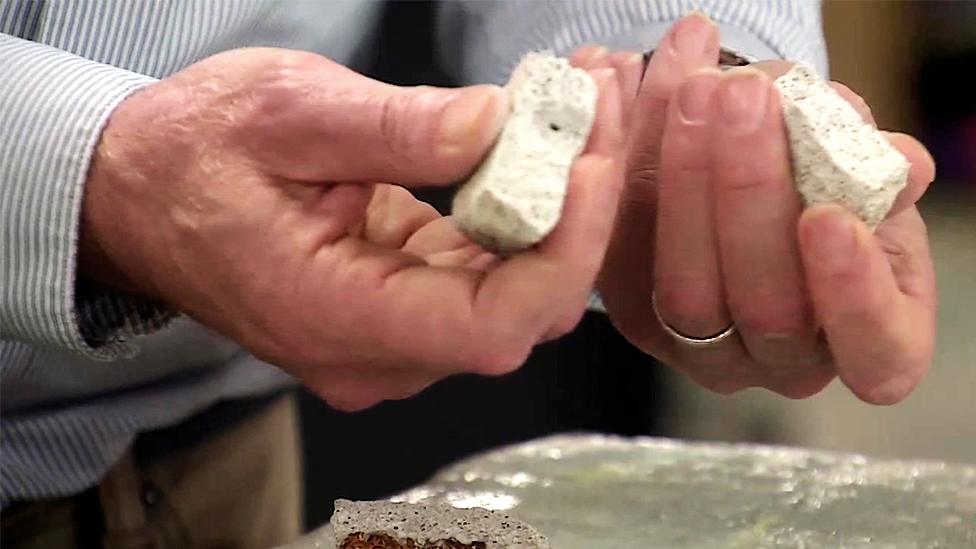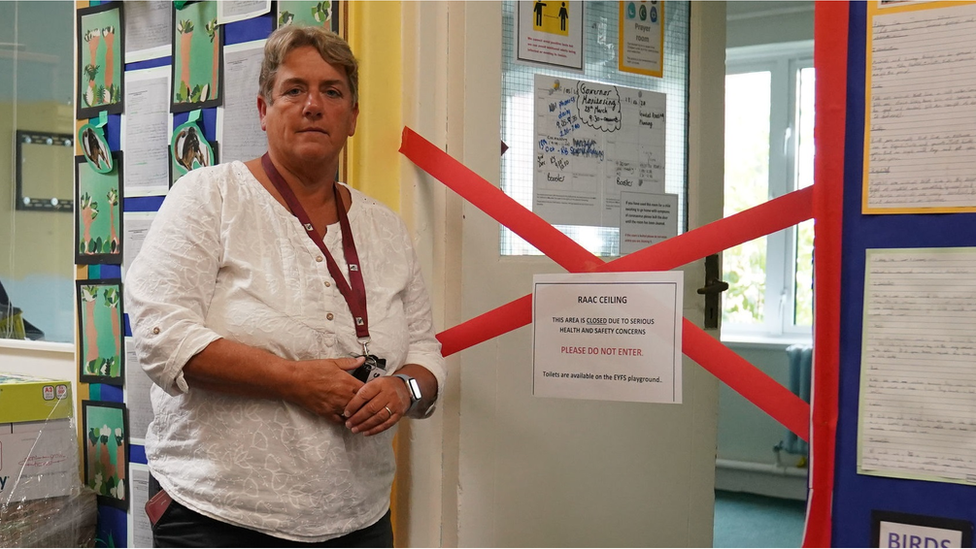RAAC: Public buildings at risk from concrete failure, experts warn
- Published

Harrow Crown Court was closed indefinitely last week after RAAC was found there during improvements
A wide range of public buildings have been constructed using a cheap version of concrete that could now be at risk of collapse, experts say.
The discovery of reinforced autoclaved aerated concrete, or RAAC, has forced the full or partial closure of more than 100 schools in England.
Many hospitals, courts and public buildings were built with the material.
Prof Chris Goodier, of Loughborough University, said the "scale of problem is much bigger than schools".
"It also covers much of the building stock in the country," he said. "This also includes health, defence, justice, local government, national government, and also a lot of the private sector."
Schools minister Nick Gibb on Friday said that the government was rebuilding seven hospitals due to large use of RAAC and would be surveying buildings across the public sectors.
Last week Harrow Crown Court in north-west London was closed indefinitely after the material was found. Five other court buildings are affected, according to government sources.
Meanwhile, three buildings in the Department of Work and Pensions (DWP) have also been identified as raising concerns.
Matt Byatt, president of the Institution of Structural Engineers, said buildings built with RAAC were "beyond their serviceable life" and the issue was flagged several years ago, including to government.
"You can't wait for people to get hurt before making these kinds of decisions," he said.
"You can have a sudden and catastrophic failure of units."
He said the "bubbly breezeblock" type material acts like a "sponge" soaking up moisture when wet, and that the extra weight combined with the fact RAAC roof planks dip over times made them prone to sudden collapse.
The Labour party has called for an "urgent audit" to find the buildings at risk across the public sector estate, while the Liberal Democrats said the public and NHS staff need "urgent clarity" .
Julian Hartley, who runs NHS Providers, a membership organisation for NHS hospitals, told BBC Radio 4's PM programme that hospitals currently affected by RAAC use props to reinforce structures.
The RAAC planks are thought to be present in 26 hospitals, and the government has said seven of the worst affected will be replaced by 2030.
In Scotland, more than 250 NHS buildings could have been built using RAAC.
Health officials in the identified buildings are currently working on an investigation to find out whether it is present. It is expected to take up to eight months.
Watch: How RAAC concrete can crumble under pressure
The government said on Friday night it had yet to draw up a definitive list of its own buildings affected by crumbling concrete.
This is one of the objectives of a working group set up earlier this year.
But the warnings had been there for years, said Prof Goodier, and are a part of an already complex national picture.
"We have a very old building stock in this country right back to the Victorian era and industrial revolution," he said.
Most of it isn't properly maintained because it's a hassle its hard work and it costs a lot of money."
"RAAC is one of many materials that hasn't been looked properly over the decade," he said.
The Health and Safety Executive (HSE) says RAAC is now beyond its lifespan and may "collapse with little or no notice".
The problem now for ministers across government is that more inspections will lead to the discover of more deteriorating concrete.
That will trigger several stages of assessment by engineers and buildings may have to close temporarily as a precaution, even if they don't pose a major risk.
The concrete crisis has echoes of the cladding scandal following the Grenfell Tower Fire in which the scale of the potential fire risks led to thousands living in flats covered with dangerous materials or paying for additional fire wardens.
Despite warnings over decades within the industry and Whitehall, the government did not ban flammable cladding until after the loss of 72 lives.
- Published1 September 2023

- Published2 September 2023
